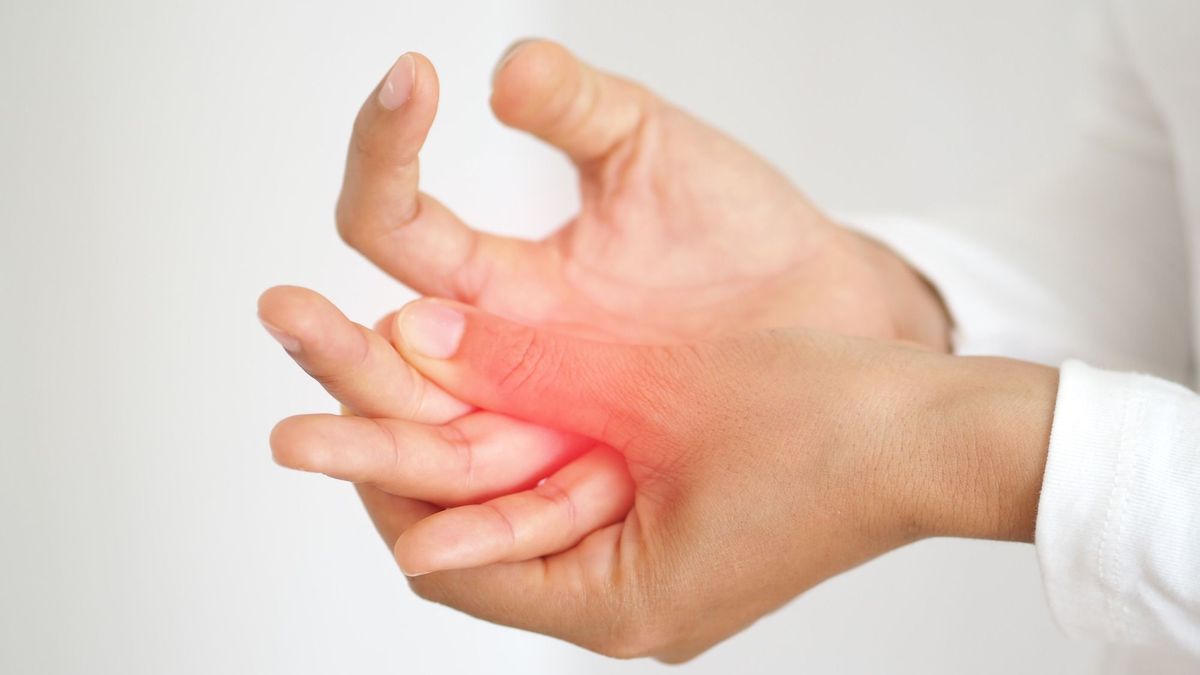
Compression of the ulnar nerve, or ulnar nerve, causes a loss of sensitivity in the last two fingers of the hand. Surgical operation is essential to prevent muscle atrophy. Done on time, it provides good results. Explanations with Dr Vincent Salabi, orthopedic surgeon specializing in the upper limb in Marseille.
What is ulnar nerve (ulnar nerve) compression?
The ulnar nerve, or ulnar nerve, innervates different muscles of the forearm and continues its journey into the hand. It provides part of the motor skills of the hand and wrist, as well as the sensitivity of the last two fingers of the hand (ring and little fingers). The ulnar nerve can be compressed in several places in the body, but compressions are mainly done at the elbow and wrist. “This compression will cause pain to the nerve and cause the appearance of symptoms such as: tingling, loss of sensitivity in the area of the nerve in question and a loss of strength impairing the functioning of the muscles. However, this non-functioning of the muscles will be responsible for muscle wasting (amyotrophy). The discomfort felt varies depending on the severity of the attack“, explains Dr. Vincent Salabi.
Symptoms: how do you know if the ulnar nerve is affected?
Damage to the ulnar nerve, or ulnar nerve, causes sensory disturbances on the fourth and fifth fingers of the hand (ring and little fingers) while the carpal tunnel affects the thumb, index and middle fingers. Pain may also occur on the inner edge of the forearm. “Most often, it is the ligaments and muscle fascia that compress the nerve. In exceptional cases, compression of the nerve can be linked to the presence of a cyst, a mass of fat (lipoma), or even an old fracture whose scar can be bothersome for the nerve.specifies the orthopedic surgeon.
Arm, elbow, hand, wrist, pinky finger…what is the route of ulnar nerve pain?
The ulnar nerve passes through the lower part of the brachial plexus, then behind the medial epicondyle, a bony relief located on the inside of the elbow, before traveling along the ulnar edge of the forearm and heading towards the last fingers of the the hand (ring and little fingers).
Why perform compression of the ulnar nerve at the elbow?
The ulnar nerve compression operation aims to relieve the functional discomfort felt by the patient and prevent the progression of symptoms. “The problem is the progressive nature of this ductal syndrome. We know that if we allow time to happen, the nerve which initially was just a little irritated and reacted by sending tingling (paresthesias) will gradually lead to a loss of sensitivity and almost irreversible strength”warns our interlocutor.
How to unblock and treat the ulnar nerve?
Ulnar nerve release surgery
There are several techniques for releasing the ulnar nerve. The most common is neurolysis with transposition which aims to release the ulnar nerve at its area of compression: the elbow. The orthopedic surgeon performs an incision at the elbow next to the nerve, cuts the different ligaments, then releases the nerve over its entire path.
Subsequently, he moves the nerve by anterior transposition, in front of the epitrochlea, to stabilize it. In-situ neurolysis does not include this stabilization step. As for endoscopic neurolysis, it certainly leaves no scar but offers a more limited possibility of releasing the nerve.
What position to relieve the ulnar nerve?
In some cases, when ulnar nerve compression is at a very early stage, wearing an orthosis at night and taking anti-inflammatories may be enough to relieve the pain.
Risks and Complications of Ulnar Nerve Release Surgery
As with any intervention, ulnar nerve release surgery carries risks of complications:
- A risk of infection favored by tobacco, diabetes and other situations of immunosuppression;
- Hematoma which may resolve on its own, or may need to be reopened to clean the hematoma;
- A risk of treatment failure: this remains exceptional and is especially observed with incomplete techniques. In the event of instability of the ulnar nerve, it is sometimes necessary to operate again;
- An extremely rare risk of nerve damage.
“The longer we wait to operate, the fewer the chances of a complete recovery. When the patient only has tingling, the surgery proves to be very effective. On the other hand, if we operate on a patient who already has a deficit in his strength motor, recovery will not be immediate and sometimes, it will remain incomplete”warns Dr. Vincent Salabi.
Expected results of the operation
The outcome of decompression surgery depends on the stage at which the patient is treated. Unless there is a major complication, an improvement is obtained in 95 to 100% of cases. At an initial stage with simple tingling, recovery is complete. At a more advanced stage, there is an improvement in symptoms but recovery is sometimes incomplete.
Post-operative rehabilitation: how long before resuming activities?
Generally speaking, rehabilitation is not necessary. Exceptionally, the surgeon can prescribe it, for example in the event of loss of strength in the hand in order to boost recovery. Simple daily activities can be resumed quickly. In practice, dressings must be changed every two days and you must wait two weeks for the skin to heal. Wearing a sling is recommended to support the arm during this phase.
